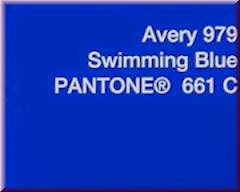A few weeks ago, I received a rather large packet in the mail:
My manuscript! But covered in strange markings, done in mauve pencil. This, my friends, was the copy edited copy of Still Life Las Vegas, ready for perusal.
A bit daunting at first glance, this document was nonetheless exhilarating to look at. After all, the publisher had cared enough about me and my project to pore over it and discover all the ways in which I might appear sadly ignorant of the basics tenets of English grammar. And thank God for that, I soon discovered. They were making it fit for public consumption.
The manuscript came with a SLLV style sheet, a little bible on the rules of the world of the novel, for the purpose of consistency. How did I use italics? Denote titles? Spell "Fudgsicle"? This was pretty cool to read, especially the list of proper nouns in the book. All the people and places I’d made up, written down just like they were real!
 |
| I had no idea who some of these characters were— Heinz Leipzig? |
Onto the manuscript itself. This was my time to review all the marks and remarks left by the proof editor and decide if they were what I wanted: vet or stet (stet is a proofing term which means “Leave it as it is— I meant to transgress grammatical laws at this point.”) It was also my last chance to wipe away any wince-inducing passages, ungainly sentences, redundancies, and any other literary detritus I discovered on the way.
Looking at all the minute edits and questions was like entering the the Merry Old Land of Oz/St. Martins, where my book was shampooed, manicured, re-stuffed, and buffed free of all errant spaces and double dashes.
 |
Can you even change the tense to match my noun? Jolly good town!
|
My proofreader was listed as one Bethany Reis, with whom I felt intimately connected these past weeks. After all, she’d gone over my book more thoroughly and minutely than anyone else, including me (including I? Including myself? Bethany would know). She’d scrutinized every word, looked up every reference,
and had laid out her findings, a secret map for me in hieroglyphic code. As I went through the pages and her notes, I imagined her whispering in my ear. She would have a voice not unlike Scarlet Johansson. “Are you really sure you want to echo the word 'propelled,' as you’ve just used it in the previous paragraph?” she would ask huskily. I would brandish my purple pencil and slash out the word, scribble in “incited” instead. Magic! We twirled our way through the pages, this duet of STET’s and checkmarks. I may not have agreed with her every note, but I appreciated them all. I was lucky for her discretion; her gentle admonishments rarely made me feel like a total idiot. I’d love for her to read this post, but I’m afraid she’ll make me rewrite it. In fact, I’m sure she’d make me rewrite it. (“Did you mean to repeat the word “rewrite”? Is the repetition intentional?”)
My List of Most Oft-Used Mistakes
|
- Constantly mixing up “farther” and “further.”
- Adding the unnecessary word “of” to “off” (“He picked the bag off of the floor.”)
- Capitalizing the seasons (did we learn to capitalize seasons as children?)
- Adding a “d” to “size,” as in “travel-sized.”
- Playing fast and loose with using the Oxford comma (the final comma before “and” in a series of things).
- Adding an “s” to the end of “upward,” “backward,” and most especially, ever and always, “toward.”
Who knew? Bethany did. I wonder if she enjoyed the book. I wonder if you can enjoy a book you're proofing, because you're reading for such a different purpose. It might even be a conflict of interest.
I finished reviewing the changes. It took a lot of time, but it was quite satisfying work. I added an acknowledgment page, a dedication, and shipped it off. Next up: bound galleys!















































